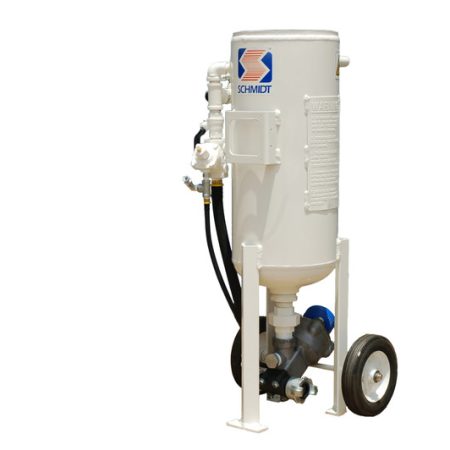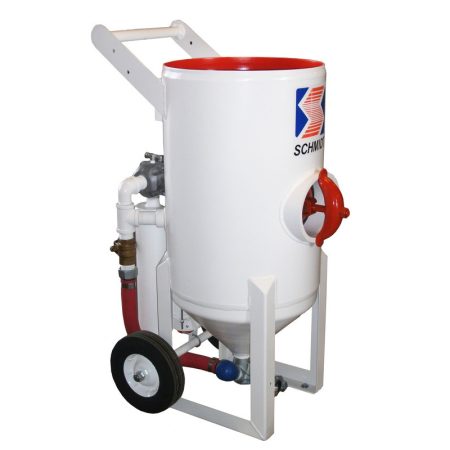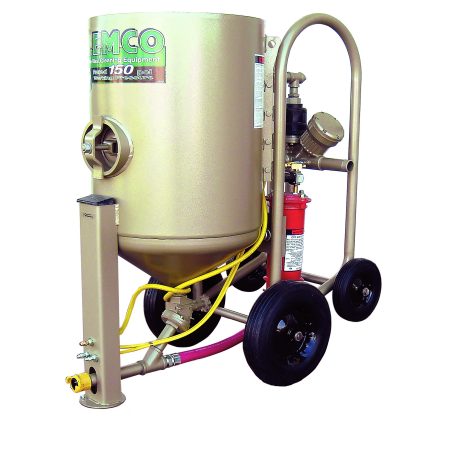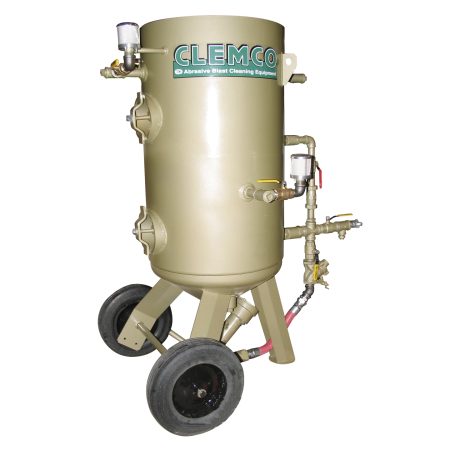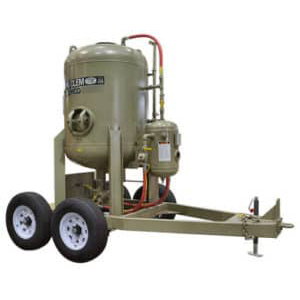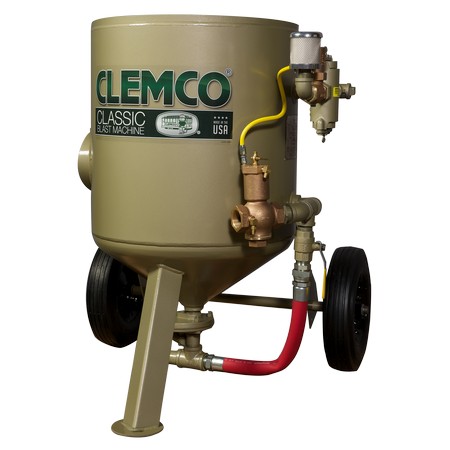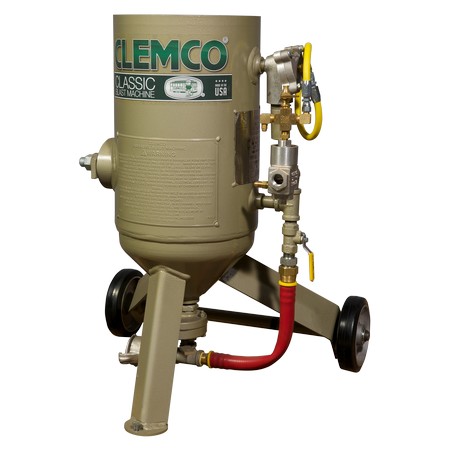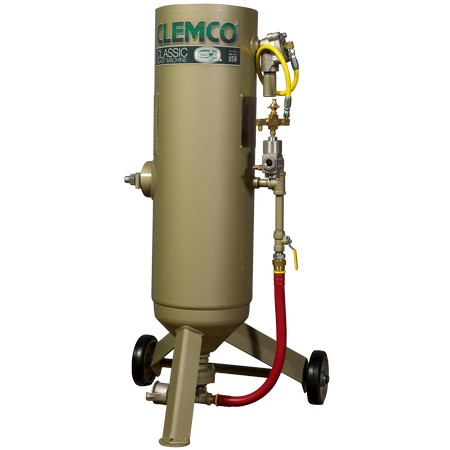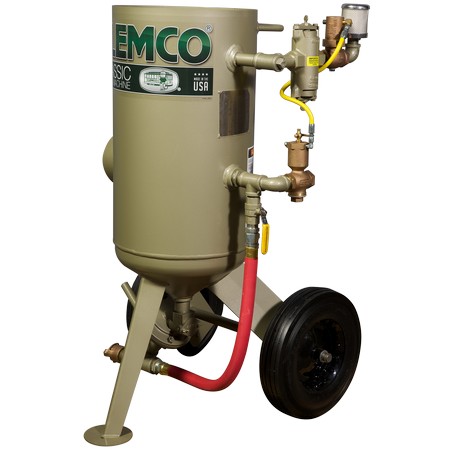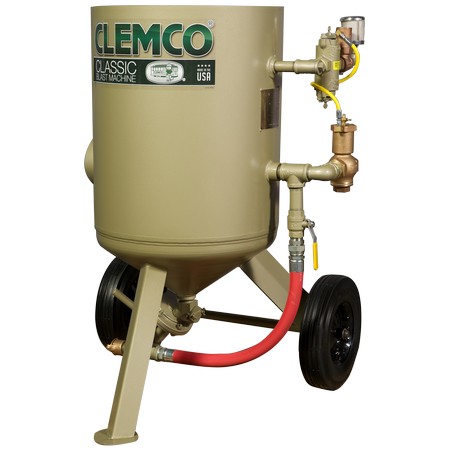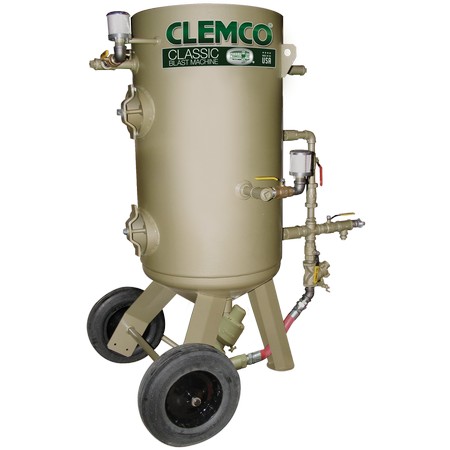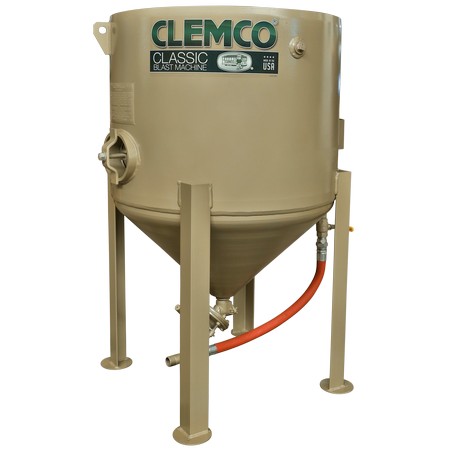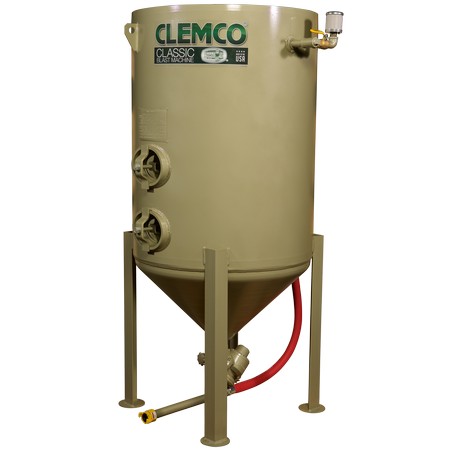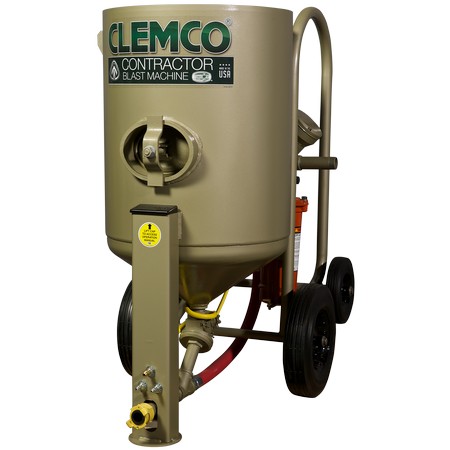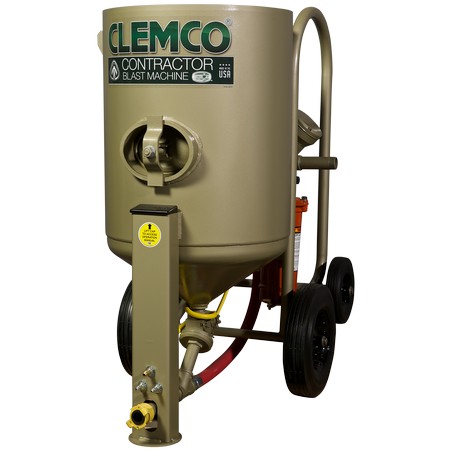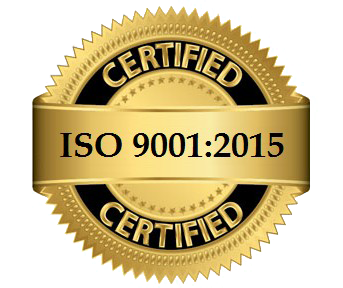Sandblasting Pots
1 cu foot, 1.5 cu foot, 2 cu foot, 3 cu foot, 6 cu foot & 12 cu foot Sandblasting Pots
N. T. Ruddock has a wide range of blast pots available suitable for your blasting needs. If you have any questions please reach out to us.
Knowledge
Blast Pots
A blast pot is a pressurized vessel designed to store and dispense abrasive materials at high velocities. The principle of operation is straightforward: abrasive media, such as sand, steel grit, or glass beads, is loaded into the blast pot’s chamber. The pot is then pressurized, typically using compressed air, to create a forceful stream of abrasives that are propelled through a nozzle at a target surface. The impact of these high-speed particles effectively removes rust, paint, scale, and other contaminants, leaving behind a clean substrate primed for coating or further processing.
Choosing the Right Size Sandblast Pot
Blast pots range in size from lightweight and compact portable units to high-production fixed install units. The choice of which size blast pot to use comes down to applications. For light workshop use for less than 10 hours per week, a one cubic foot blast pot may be enough to do the job. Designed for a single operator, these highly portable machines are excellent for hobbyists and professionals alike. For contractors requiring a larger capacity for media, a longer performance time, and the ability to run for 40 hours per week, a 3.5 cubic feet or 6.5 cubic feet blast pot may be more suitable. Although still portable, the weight of these machines when laden with media means that these larger capacity blast pots are best suited to being mounted in a fixed position, such as a trailer or truck bed. For fixed blast room installs, you can consider a 10 or 20 cubic feet model with the longest performance time and the option for multiple users.
The Art and Science of Blasting: Precision and Safety
Operating a blast pot is both an art and a science. Achieving the desired results requires not only selecting the appropriate abrasive media for the task but also calibrating the pressure, nozzle size, and blasting angle to ensure optimal efficiency and surface finish. Experienced operators understand the nuances of different materials and substrates, adapting their techniques to achieve consistent and controlled results. Safety is a paramount concern when working with blast pots. The abrasive particles generated during blasting can pose health risks to operators if inhaled, and the high-speed particles can also cause injury. Proper personal protective equipment (PPE), such as helmets, respirators, and blast suits, is essential to safeguard workers.
Different Types of Blasting Media
Blasting media are materials used with blast pots to clean, prepare, or finish surfaces. Different types of blasting media are chosen based on the application, surface material, desired finish, and environmental considerations. Here are some common types of blasting media:
Sand
Traditional sandblasting media, often referred to as silica sand, was widely used in the past. However, due to health concerns related to silica dust exposure, its use has declined in favor of safer alternatives.
Aluminum Oxide
This abrasive media is commonly used for surface preparation, cleaning, and finishing. It is versatile and comes in various grit sizes, making it suitable for a range of applications.
Glass Beads
Glass beads are spherical abrasives made from glass. They are often used for delicate or sensitive surfaces, as they provide a smoother finish without aggressive material removal.
Steel Grit
Steel grit is angular in shape and is particularly effective for removing tough coatings and rust from metal surfaces. It is commonly used in industrial applications.
Steel Shot
Similar to steel grit, steel shot is used for cleaning and surface preparation. It’s available in different sizes and can be used to achieve specific surface profiles.
Walnut Shells
Crushed walnut shells are a natural, biodegradable abrasive media. They are often used for gentle cleaning and polishing, especially on softer surfaces.
Corn Cob
Like walnut shells, crushed corn cob is a natural and biodegradable option used for lighter cleaning and surface finishing tasks.
Garnet
Garnet is a naturally occurring abrasive mineral that is often used for waterjet cutting and surface preparation. It’s relatively hard and can be recycled multiple times.
Crushed Glass
Crushed glass abrasive is made from recycled glass and is used for cleaning and surface profiling. It offers an environmentally friendly alternative to traditional abrasives.
Sodium Bicarbonate
Baking soda blasting uses sodium bicarbonate (baking soda) as an abrasive to remove contaminants without damaging surfaces. It’s commonly used for cleaning and paint removal in sensitive areas.
Calibrating the Pressure, Nozzle Size, and Blasting Angle
Abrasive blasting is a versatile and powerful process used in various industries for surface preparation, cleaning, and finishing tasks. However, achieving the desired results while ensuring safety and efficiency requires careful calibration of three key parameters: pressure, nozzle size, and blasting angle. These factors interact to determine the effectiveness of the blasting process, the quality of the surface finish, and the overall productivity of the operation.
Pressure
A pressure that is too high can lead to excessive material removal, damage to the substrate, and increased wear on the blasting equipment. Conversely, a pressure that is too low might result in inadequate cleaning or surface preparation. The pressure setting should be determined based on the material of the substrate, the type of abrasive media being used, and the desired outcome. Harder materials generally require higher pressures, while more delicate surfaces necessitate lower pressures to avoid damage. Additionally, factors such as the distance between the nozzle and the surface, as well as the condition of the nozzle, can impact pressure effectiveness. Regular monitoring and adjustment of pressure are essential to maintain consistent and optimal blasting performance.
Nozzle Size
Nozzle size plays a crucial role in controlling the volume and velocity of abrasive particles expelled during the blasting process. A smaller nozzle generates a higher velocity stream, which can be effective for removing tough coatings or rust from metal surfaces. A larger nozzle, on the other hand, produces a wider spray pattern, making it suitable for covering larger areas with a lower-intensity impact. Choosing the appropriate nozzle size depends on the type of abrasive media, the pressure setting, and the desired coverage and intensity. Using a nozzle that is too small with a high-pressure setting can lead to excessive wear and premature failure. Conversely, using a nozzle that is too large with a low-pressure setting might result in inefficient material removal and extended blasting times.
Blasting Angle
The blasting angle refers to the angle at which the nozzle is positioned relative to the surface being treated. The angle of attack influences the efficiency of material removal, the uniformity of the surface finish, and the potential for creating profiles on the surface. Optimal blasting angles vary depending on the application. For instance, a perpendicular blasting angle (90 degrees) is effective for efficiently removing coatings and contaminants, while a shallower angle (45 degrees) can create surface profiles for improved paint adhesion. It’s important to consider the geometry of the object being blasted and adjust the blasting angle accordingly to ensure uniform coverage and desired results. In conclusion, achieving successful abrasive blasting requires careful calibration of pressure in the pot, nozzle size, and blasting angle. These three parameters are interconnected and influence each other’s effectiveness in the blasting process. Proper calibration enhances the quality and efficiency of surface preparation, cleaning, and finishing tasks while minimizing the risk of damage to substrates and equipment. Regular monitoring, adjustment, and adherence to manufacturer guidelines and industry best practices are essential to ensure safe, effective, and successful abrasive blasting operations.

